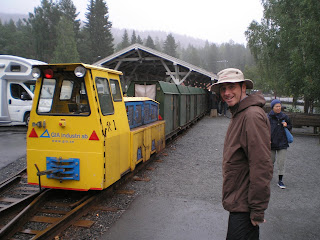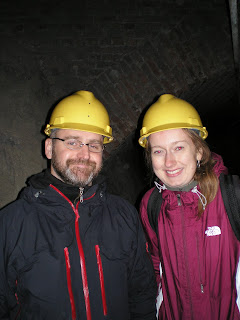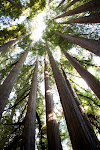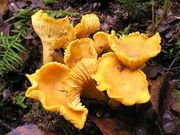 The Kongsberg Silver Mines
The Kongsberg Silver Mines
Last Sunday, we took a detour to a silver mine on our way to a hiking spot that Nils picked out.
The Kongsberg silver mine, located about 45 minutes southwest of Oslo, was first discovered by accident in 1623 when a pair of local farm children noticed grazing bulls rubbing their horns against rocks with shiny patches. Their father melted down the silver but underestimated its worth and sold it at such a low price that authorities suspected it originated from stolen goods. To prove his innocence, he lead them to the spot of the first discovery and within two weeks mining began. At this time, Norway was controled by a Danish King, Christian IV, whose lavish spending habits made him ravenous for additional income sources. He visited the mine in person and declared personal ownership of the mountain and extraction operation. So, to this day, the area is called Kongsberg, the King's Mountain. Over the next 330 years the mines produced 1350 tons of silver.
 Into the Mines
Into the Mines
It was a drizzly day and Nils had never been inside the shafts, so we took him up on the offer to try out this local tourist attraction, a train that tunnels 2.3 km staight into the mountain. We crammed ourselves into a small covered train car and bounced along in the dark as the temperature dropped.
After a 12 minute ride we took a tour through the old passageways and the main tunnels with a group of English speakers from around the world. Afterwards, Nils tooks us on a meandering hike around the top of the mountain to see the opening of the mine, the old aqueduct system, and reconstructions of the original mining buildings.
Mining in Kongsberg and Around the WorldThere still is silver in Kongsberg, but mining has stopped. After the full tour, it's clear why. Despite some of the perks and benefits that the Kongsberg miners had, such as healthcare, it is a horrible occupation. The mountains around here are made of hard, dense rocks that easly wear down chisels and tools. Until the advent of compressed air drills, the most common method was to light a fire next to a tunnel wall. Then, as the rocks cooled they would crack and the miners would chip away fragments and shards, progressing at the rate of only a few inches a day. Accidents were frequent, and the average life expectancy was just 40 years. With rising wages and tighter regulations, silver mines overseas became more profitable, where labor was cheap, and there weren't so many regulations. Today, t
he top silver mining countries are Peru, Mexico, China, and Chile and most of it is used for industrial purposes.
Around the world, mining continues to be one of the most dangerous and polluting industries. Gold mining and processing cause
cyanide leaching. In the US, mining is the
second most hazardous occupation.
Alternatives to Mining
At least in the jewer

ly industry there are easy alternatives to mined metals. I found Matt's wedding ring on a site call
Brilliant Earth that specializes in ethical diamonds and recycled precious metals. His ring is made from recycled gold. Even Wal-Mart offers a line of ethical jewerly called
Love,Earth. And then, there is the obvious alternative, buying used or redesigned jewerly. Reducing the use of mined metals in industry sounds more challenging. Even though copper is heavily recycled, some industrial processes require fresh batches,
or so this article points out. But, recycling can go a long way.


